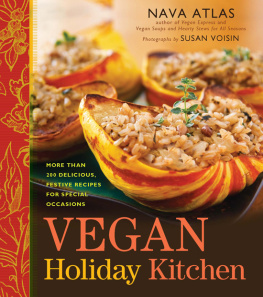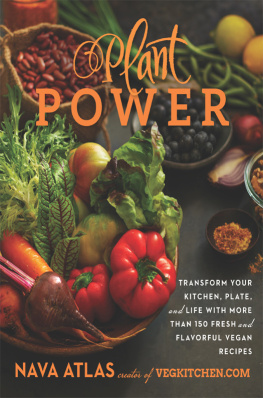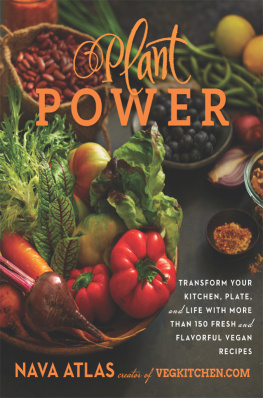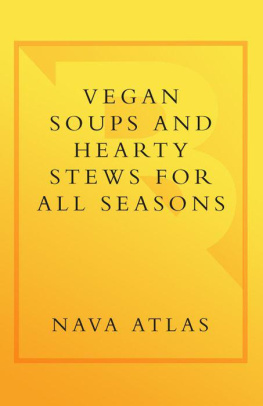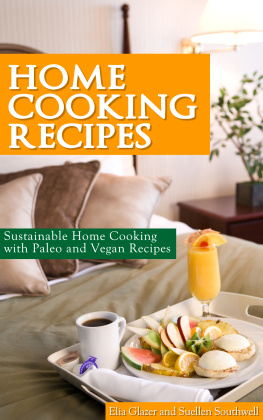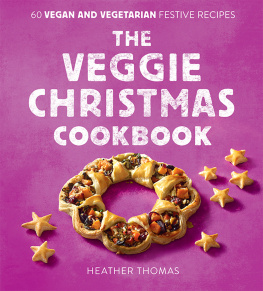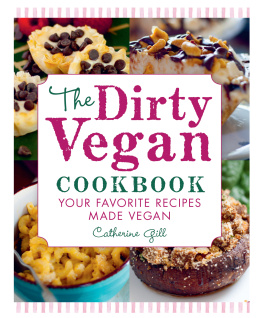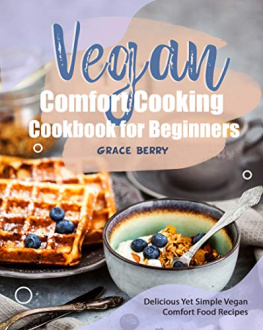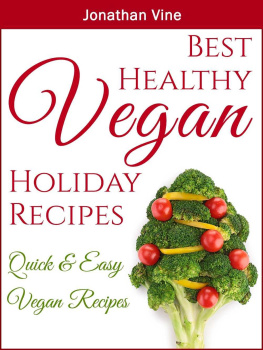Also by Nava Atlas
COOKBOOKS
Vegan Soups and Hearty Stews for All Seasons
Vegan Express
The Vegetarian Family Cookbook
The Vegetarian 5-Ingredient Gourmet
Pasta East to West
Great American Vegetarian
Vegetarian Express
Vegetarian Celebrations
Vegetariana
VISUAL NONFICTION
The Literary Ladies Guide to the Writing Life
Secret Recipes for the Modern Wife
Expect the Unexpected When Youre Expecting! (A Parody)
MORE THAN 200 DELICIOUS, FESTIVE
RECIPES FOR SPECIAL OCCASIONS
VEGAN
Holiday Kitchen
NAVA ATLAS
PHOTOGRAPHS BY SUSAN VOISIN


STERLING and the distinctive Sterling logo are registered trademarks of Sterling Publishing Co., Inc.
2011 by Nava Atlas
All rights reserved. No part of this publication may be reproduced, stored in a retrieval system, or transmitted, in any form or by any means, electronic, mechanical, photo-copying, recording, or otherwise, without prior written permission from the publisher.
ISBN 978-1-4027-8005-9 (hardcover)
ISBN 978-1-4027-9096-6 (Sterling epub)
For information about custom editions, special sales, and premium and corporate purchases, please contact Sterling Special Sales at 800-805-5489 or specialsales@sterlingpublishing.com.
Book design by Christine Heun
2 4 6 8 10 9 7 5 3 1
www.sterlingpublishing.com
M ore than twenty years ago, I published Vegetarian Celebrations, a collection of holiday menus. I did this out of necessitymy own, as a longtime vegetarian, and that of friends and acquaintances who seemed to come to me regularly for ideas on what to serve the inevitable vegetarian guest or two at holiday meals, particularly Thanksgiving, Christmas, and Passover. Now, vegetarians at the table rarely cause a stir, and the bar has been set higher by the burgeoning vegan population. Neither vegans nor vegetarians want to feel like a footnote at the table; nor do they want to go back to the old way of celebrating holidays, which consisted of politely picking at side dishes and being made to feel guilty for not partaking of all the dishes for which our parents, grandparents, or aunts slaved over a hot stove.
We of the plant-based predilection want to celebrate holidays in style, without apologies, and enjoy every course of the meal, from appetizers to desserts. Vegan cuisine has blossomed into full glory, which doesnt include sacrifice. If it means we must make each animal-free course of the meal ourselves, well do so, and joyfully, at that. The irony is that lovingly, thoughtfully crafted vegan dishes made for celebratory occasions are the very ones that everyone elseno matter what their culinary bentwants to try. My sister-in-law Anne often notes that on the many occasions when she is asked to bring a vegan dish to share (so that my brother, a vegan, but no cook himself, will have something substantial to eat) she has learned to make double of what she thinks will be needed, because everyone will want to try what Ron is eating.
Those of us who live on either the east or west coast of the United States have come to think of the vegan way of life as nearly (if not downright) mainstream. But its not just a bicoastal phenomenon; almost any major city in the U.S. has a plethora of pleasures for vegans, from natural foods groceries to all-vegan restaurants to vegan-friendly ethnic eateries. Honestly, being a vegan today is easier than it was being a vegetarian twenty or twenty-five years ago. It wasnt that much of a leap when my own family (consisting of husband and two sons) went from vegetarian to vegan some years ago.
But having said all that, many vegans still feel as if theyre living on a lonely outpost, especially if they dont live in a metropolitan area, or if they are a part of a family thats not vegan-friendly. Holidays can be particularly trying for vegans who arent part of a wider circle of like-minded eaters. This book is dedicated to themand to vegans of all stripes. Thats one of the reasons why Ive focused, as much as possible, on ingredients that are familiar and easily obtained almost anywhere. The other is that during the holidays theres a powerful pull of the past, for rituals and traditions that are familiar. So while many new traditions have emerged when it comes to holiday fare, Ive tried to incorporate as many well-known ingredients, seasonings, and embellishments into the recipes and menus as possible.
If you are one of my longtime readers, you might wonder if this book is a revised and updated edition of Vegetarian Celebrations. For the most part, it is not, although I have included some of the more useful, relevant sections of Vegetarian Celebrations, such as the guides to grilling vegetables and protein foods. A number of my Thanksgiving favorites and Jewish holiday classics, such as sweet noodle kugel, latkes, and matzo ballswhich are already vegetarian, but need a bit of creativity to convert to veganhave migrated here from Vegetarian Celebrations in new, dairy- and egg-free versions.
In this book, I also chose to focus more on major holidays for which people everywhere tend to cook. In Vegetarian Celebrations I covered Mothers Day, Fathers Day, St. Patricks Day, and the like. Mothers Day and Fathers Day, for instance, are often occasions for going out (though you can easily tap into some of the ideas in this book if youd like to cook for Mom or Dad, or choose one of the ). St. Patricks Day seems like the kind of holiday where people like to go out and, shall we say, imbibe, rather than stay home and make a classic cabbage and potato colcannon. Other, minor holidays similarly dont have stay home and cook written all over them. But Thanksgiving, Christmas, Easter, Independence Day, and the major Jewish holidays certainly do, so thats where Ive devoted my attention in this new collection of recipes and menus. One additional chapter, the last, presents a selection of recipes for miscellaneous entertaininga trio of brunch menus that can be used for all sorts of occasions (from feeding overnight guests to greeting the New Year), a selection of hot and cold appetizers, and an array of sturdy dishes suitable for transporting to potlucks or serving at home for casual buffets.
Another thing that has changed over the last couple of decades, Ive noticed, is a greater awareness of food allergies. Even as an expanding number of soy-based dairy alternatives has made life easier and tastier for many vegans (as well as for anyone with dairy allergies), it has given rise to the awareness of soy allergies (and most likely, the cause of the allergies themselves). Fortunately, the selection of non-soy dairy alternatives is on the rise. Tree nut allergies are another serious consideration. But the food allergy that has garnered quite a bit of serious attention in the last few years is gluten sensitivity, which can result in celiac disease. As I was nearing the completion of the manuscript for this book, I noticed that many of the recipes were gluten-free, or could be made gluten-free, with minor adjustmentsa development I hadnt planned onbut that was, perhaps, the result of my own evolving habits. Even though I dont follow a gluten-free regimen, I seem to be less inclined these days to eat bready sorts of foods. And if given a choice between bulgur and quinoa, Im more inclined to choose the latter. As for pasta, I like my durum wheat, but there are plenty of good alternatives now for anyone on a gluten-free diet. To make it easier to tell which recipes in this book address food sensitivities, Ive identified them with gluten-free, soy-free, or nut-free labels. And of course all the recipes are dairy-free and egg-free, so just about every major food allergy is accounted for. May all be fed!
Next page
